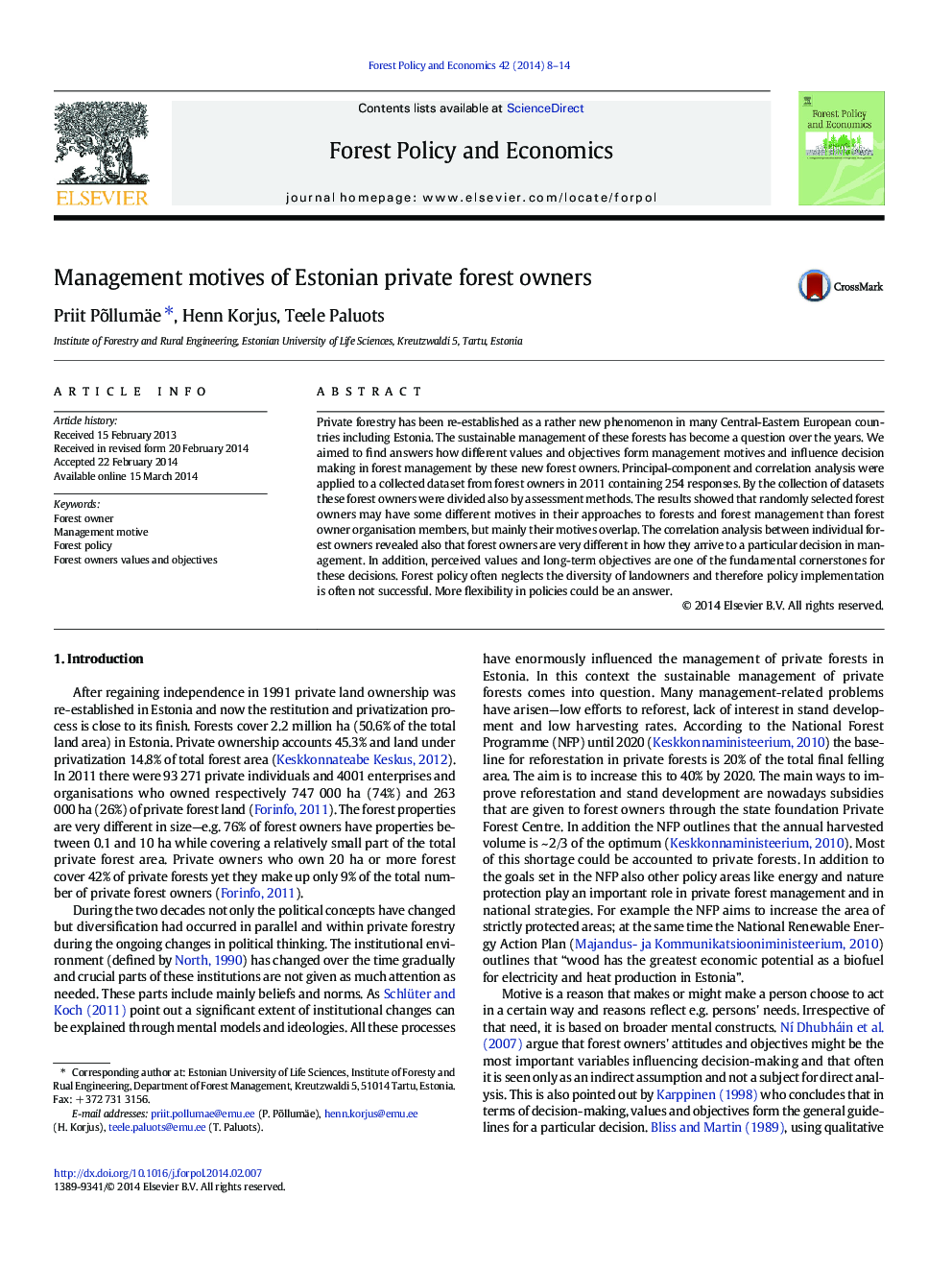| Article ID | Journal | Published Year | Pages | File Type |
|---|---|---|---|---|
| 91064 | Forest Policy and Economics | 2014 | 7 Pages |
•Using PCA analysis we find how new forest owners' management decisions are influenced.•We found five management motives for forest owners—conservation motive, non-wood motive, income motive, ‘home’ motive and self-consumption motive.•Forest owners in Estonia are very diverse in their values and objectives and also in making management decisions.•Rigid policies might not be successful in guiding forest owner decisions.
Private forestry has been re-established as a rather new phenomenon in many Central-Eastern European countries including Estonia. The sustainable management of these forests has become a question over the years. We aimed to find answers how different values and objectives form management motives and influence decision making in forest management by these new forest owners. Principal-component and correlation analysis were applied to a collected dataset from forest owners in 2011 containing 254 responses. By the collection of datasets these forest owners were divided also by assessment methods. The results showed that randomly selected forest owners may have some different motives in their approaches to forests and forest management than forest owner organisation members, but mainly their motives overlap. The correlation analysis between individual forest owners revealed also that forest owners are very different in how they arrive to a particular decision in management. In addition, perceived values and long-term objectives are one of the fundamental cornerstones for these decisions. Forest policy often neglects the diversity of landowners and therefore policy implementation is often not successful. More flexibility in policies could be an answer.
